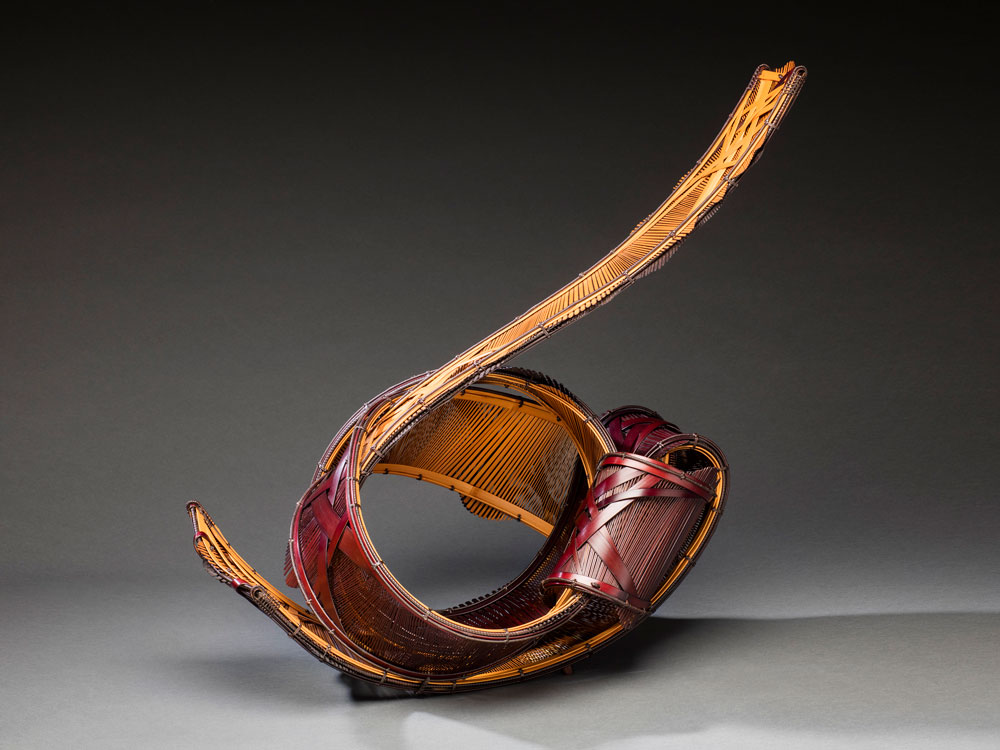
Torii Ippo, 2011, Spring Surf, madake bamboo, rattan 29.25 x 28 x 17 in, Courtesy of TAI Modern
Torii Ippo (1930-2011) was the oldest son of Torii Hounsai, a well-regarded bamboo artist who won many prizes from the early 1900s to the late 1930s for his flower baskets and offering trays. As a young boy, Torii liked to spend time in his father’s studio making toys out of bamboo scraps. Though Hounsai had several students who assisted him, he chose not to train his own son. We do not know why. However, in 1950, when Hounsai became ill, he called his 20-year-old son and asked him to become a bamboo artist and take over the family studio. Hounsai died shortly thereafter. Torii was not sure if he had the aptitude or artistic talent to take on this task but decided to give it a try.
Torii taught himself how to select quality bamboo, how to prepare the material, and how to construct and weave a basket by closely copying his father’s baskets, thus honing his skills through trial and error.
For the first 30 years of his career, Torii Ippo made baskets for use in matcha tea ceremonies. But, at the age of 50, Torii felt the time had come to create and share an entirely new style of art. In 1980, he created his first sculpture, Tabane, a large-scale, architectural bamboo piece that was a dramatic departure from the traditional baskets he had been making. Over the next 30 years, Torii established himself as one of the most original and successful bamboo sculptors of his time. In 2006, he became the third bamboo artist to be awarded the top prize at Nitten (Japan Fine Arts Exhibition).
Spring Surf was the last major piece Torii created before his death in 2011. Inspired by the crashing waves of Mikawa Bay and the Pacific Ocean, this bold and dynamic sculpture employs the artist’s signature band construction.
Torii’s work is in collections at the Metropolitan Museum of Art; Museum of Fine Arts, Boston; Morikami Museum and Japanese Gardens; De Young Museum; Asian Art Museum, San Francisco; Nishio City Museum; and Mint Museum.
To view TAI Modern's current show of his work, click here.
